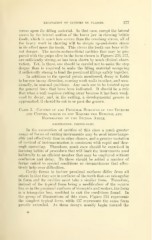Page 405 - My FlipBook
P. 405
EXCAVATION- OF CAVITIES BY CLASSES. 177
stress upon the filling material. In that case, except the lateral
stress by the lateral motion of the lower jaw in chewing biittle
foods, which is much less severe than the crushing stress, all of
the heavy work in chewing will be simple up-and-down stress
in its effect upon the tooth. This stress the tooth can bear with-
out danger. The mesio-oecluso-distal cavities that may be pre-
pared with the pulps alive in the form shown in Figures 236, 237,
are sufficiently strong, as has been shown by much clinical obser-
vation. Yet, in these, one should be careful not to make the step
deeper than is required to make the filling material occupying
it sufficiently strong to bind the proximal fillings safely together.
In addition to the special points mentioned, decay is liable
to burrow in any direction, causing weak walls in other, and occa-
sionally, in unusual positions. Any such are to be treated upon
the general lines that have been indicated. It should be a rule
that when a wall reciuires cutting away because it has been weak-
ened by decay, and, in the cutting, a developmental groove is
approached, it should be cut to or past the groove.
Class 3. Cavities in the Proximal Surfaces of the 'Incisors
AND Cuspids, which do not Require the Removal and
Restoration of the Incisal Angle.
ILLUSTRATIONS: FIGURES 246-271.
In the excavation of cavities of this class a much greater
range of forms of cutting instruments may be used interchange-
ably and effectively than in other classes, and a greater variation
of method of instrumentation is consistent with rapid and thor-
ough operating. Therefore, much care should be exercised in
forming habits of procedure that will limit the instruments used
habitually to an efficient number that may be employed without
confusion and delay. To these should be added a number of
forms suited to special conditions or circumstances that effec-
tively help over difficulties.
Cavity forms in incisor proximal surfaces differ from all
others in that they are in surfaces of the teeth that are triangular
in form and the cavities must take a similar form. Therefore,
instead of the typical form being a modification of the square
box as in the proximal surfaces of bicuspids and molars, the form
is a triangular box, modified to suit the conditions found. In
the group of illustrations of this class, Figure 252 represents
the simplest typical form, while 257 represents the same form
greatly extended. As these decays usually begin toward the
26


